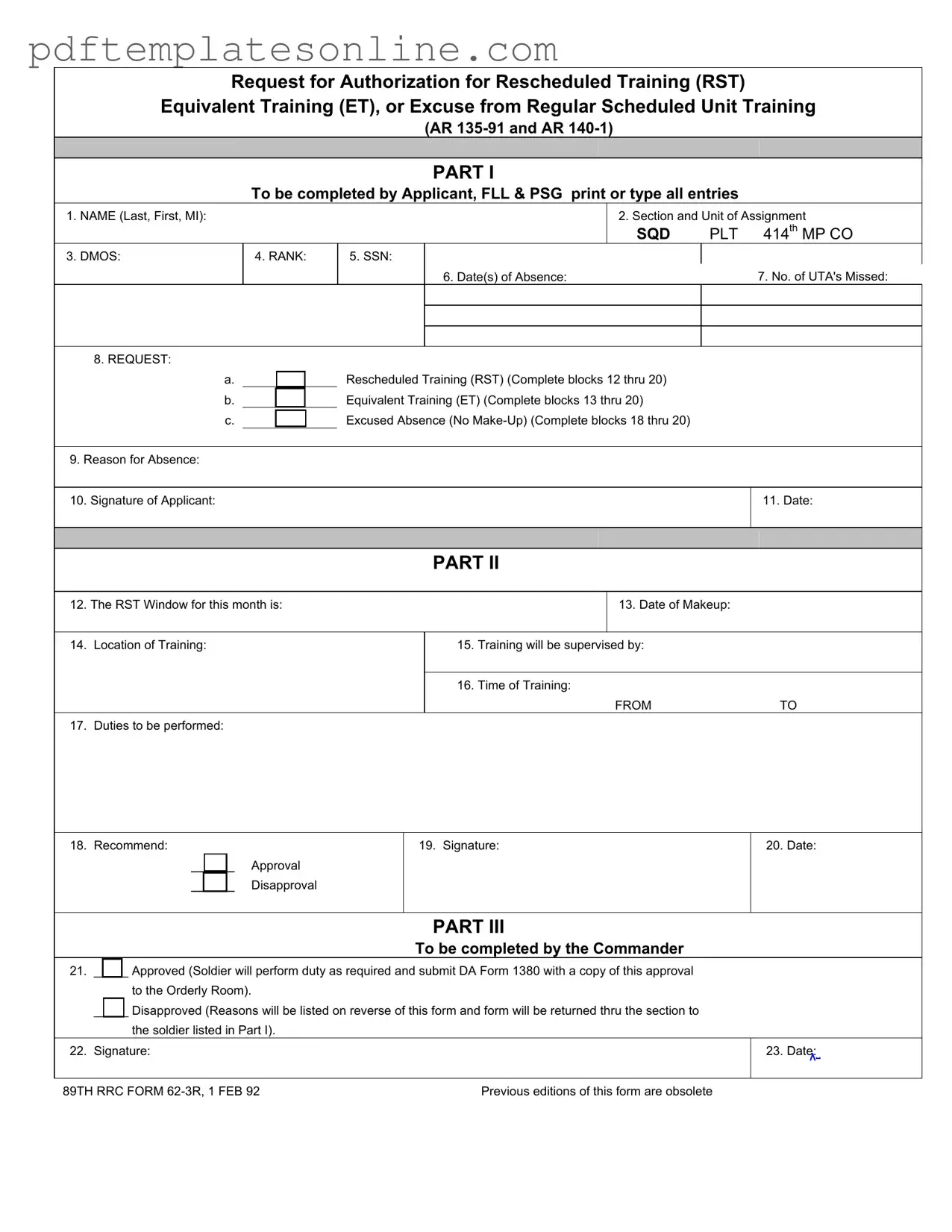Filling out the RST Army form can be straightforward, but many people make common mistakes that can delay processing. One frequent error occurs in the name section. Applicants often forget to include their middle initial or use nicknames instead of their legal names. This can lead to confusion and potential issues with identification.
Another mistake is found in the section and unit of assignment. Some individuals fail to provide complete information, such as the squad or platoon number. Incomplete details can result in the form being returned for clarification, wasting time for both the applicant and the reviewing authority.
When it comes to the reason for absence, applicants sometimes provide vague explanations. A clear and specific reason is essential for the approval process. Without sufficient detail, the reviewing officer may not fully understand the circumstances, leading to disapproval.
Signature errors are also common. Some applicants forget to sign the form or fail to date it properly. An unsigned form cannot be processed, and missing dates can create confusion about when the request was made. Both the applicant and the commander need to ensure their signatures are present and dated correctly.
In Part II, applicants sometimes overlook the importance of filling out the training details. Missing information about the date of makeup, location, or time of training can lead to delays. Each of these details is crucial for proper scheduling and coordination.
Lastly, many individuals neglect to check the recommendation section. Failing to indicate approval or disapproval can lead to the form being set aside. Clear recommendations help streamline the review process, ensuring that the form moves forward without unnecessary delays.
